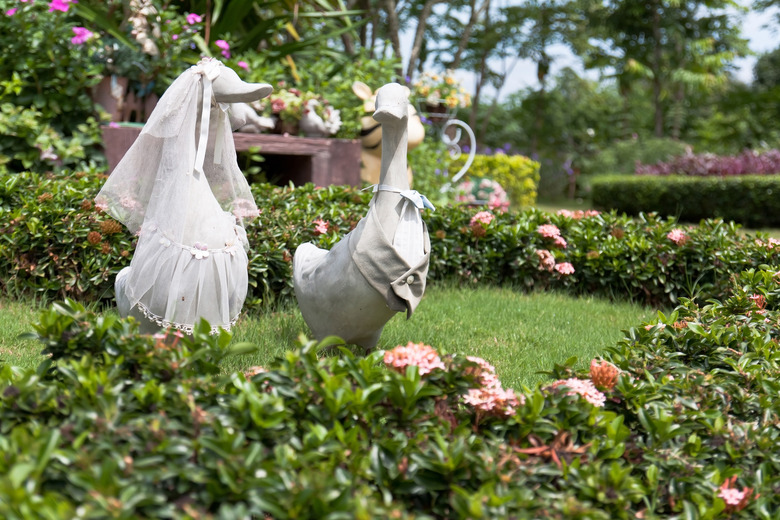How To Waterproof A Plaster Statue For Outdoor Use
We may receive a commission on purchases made from links.
Plaster statues are made from a mix of heat-treated gypsum powder and water that hardens when it dries. Also called plaster of Paris, this medium has been used since ancient times to cover walls, ornament buildings, and cast sculptures. With a mold and plaster mix, anyone can replicate sculptures from antiquity, the Renaissance, or more modern times.
Though a plaster sculpture can feel tough, the material is brittle, porous, and slightly water-soluble, which means it can easily be chipped, broken, or stained. Even if you place a sculpture under cover, high humidity can affect the material. Unless you prefer the look of a slowly degrading sculpture, you'll need to seal your plaster statue for the outdoors to protect it from the elements for years to come.
Best Materials for Cleaning and Waterproofing Plaster
Best Materials for Cleaning and Waterproofing Plaster
To seal plaster, you can use many of the same sealers that you would use to waterproof wood for the outdoors, such as varnish, lacquer, or polyurethane. If you are planning to paint your statue, waterproof masonry paint is another option. Polyurethane makes a good sealer on a chalky white plaster statue because it causes little yellowing. All polyurethanes create a water-resistant barrier, but only some are formulated to be waterproof. Consider the amount of moisture your statue will be exposed to as well as how glossy a sheen you want when choosing a polyurethane for the outdoors.
When cleaning unsealed plaster, it's best not to use any water. Fine sandpaper can be used for smoothing out a chipped or pitted surface, but it also has the potential to leave scratch marks and isn't typically necessary for light cleaning. Use a gentle scrubbing pad or a white eraser (or both) to clean the surface without causing damage.
Things Needed
-
Polyurethane
-
Paintbrushes
How to Waterproof an Outdoor Statue
1. Clean the Plaster Statue
Use a clean, lint-free cloth to dust the statue. Gently remove any dirt, stains, and marks with a scrubbing pad and/or white pencil eraser and then use your cloth to wipe off the statue again.
2. Seal the Plaster Statue
Make certain the statue is completely dry before you attempt to seal it. Then, using your paintbrush, cover the entire statue with a thin, even coat of polyurethane.
3. Recoat the Statue With Sealant
Allow the first coat of polyurethane to dry completely according to label instructions. Apply a second and third coat, allowing each additional coat to dry before the next coat's application.
4. Dry the Plaster Statue
Allow the final coat to finish drying before placing the statue in the garden to enjoy.
